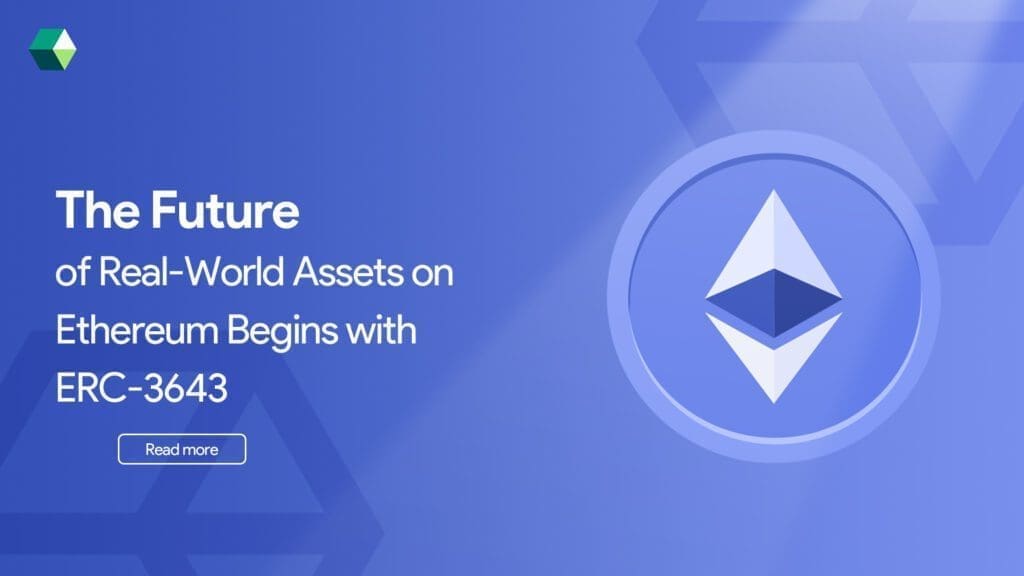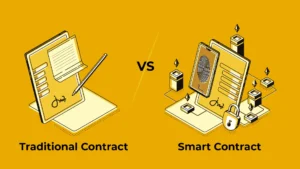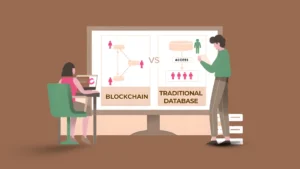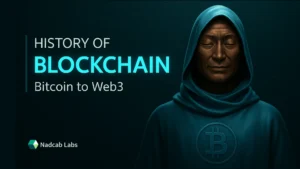
The blockchain ecosystem is evolving, and Ethereum continues to be at the center of this transformation. From the early days of cryptocurrency and decentralized finance (DeFi) to the rise of NFTs and DAOs, Ethereum has been the go-to platform for innovation. Now, the next big leap is happening with real-world assets (RWAs). These include tangible, off-chain items such as real estate, company shares, bonds, and even precious artworks. The challenge? Ensuring these assets are tokenized in a way that respects global compliance requirements. The solution? ERC-3643.
In this extended blog, we’ll dive deep into what ERC-3643 is, why it matters, and how it’s positioned to transform the way we view ownership, compliance, and participation in the blockchain economy. This is also where the role of an asset tokenization development company becomes crucial, helping businesses enter this new era of finance securely and confidently.
What Are Real-World Assets (RWAs) in the Blockchain Context?
Real-world assets include everything from real estate, fine art, and infrastructure projects to private equity, bonds, and commodities. These assets represent trillions of dollars in value globally. Historically, investing in such assets has required navigating complex legal systems, intermediaries, and lengthy settlement processes.
By representing these assets digitally through blockchain-based tokens, we enable fractional ownership, increase liquidity, automate workflows through smart contracts, and democratize access to investment opportunities. Blockchain reduces the need for intermediaries and creates a secure, transparent environment for asset ownership and transfer. By tokenizing these assets on Ethereum, it becomes possible to:
- Fractionalize ownership, allowing multiple people to co-own a high-value asset.
- Trade them 24/7 globally without borders.
- Embed smart contracts for automatic dividend distribution or rent collection.
- Increase liquidity by transforming them into digital assets.
- Create transparent, traceable ownership histories.
However, unlike regular crypto tokens, real-world asset tokens require strict oversight and regulatory compliance. This is where asset tokenization development services come into play, offering the expertise needed to implement these systems securely.
Why Compliance Matters: Enter ERC-3643
Traditional token standards like ERC-20 and ERC-721 are powerful but lack built-in mechanisms for regulatory compliance. For example:
- ERC-20 tokens can be sent to any wallet, regardless of the owner’s identity or location.
- ERC-721 NFTs are unique and can be easily transferred without vetting the receiver.
For institutions like banks, real estate developers, or governments to trust blockchain-based asset tokenization, they need a framework that:
- Embeds identity verification (KYC/AML).
- Restricts who can send or receive tokens.
- Maintains auditable histories of asset transfers.
- Is interoperable with traditional finance regulations.
ERC-3643 is built with all of this in mind, supporting every layer of asset tokenization development through programmable compliance.
What is ERC-3643?
ERC-3643, also known as the T-REX Protocol (Token for Regulated Exchanges), is an Ethereum token standard specifically designed for tokenizing regulated real-world assets. It focuses on enabling compliant issuance and transfer of digital securities and tokenized assets in a permissioned and verifiable way.
Unlike ERC-20, which is open to all and cannot enforce restrictions, ERC-3643 tokens are only transferrable between wallets that have been pre-approved and KYC-verified. The result? A tokenized asset that complies with the same legal and regulatory rules as its physical counterpart. This is exactly what an Asset Tokenization Provider helps facilitate, acting as the technology partner that implements ERC-3643 in alignment with legal needs.
Core Principles and Components of ERC-3643
-
Decentralized Identity (DID)
ERC-3643 incorporates a decentralized identity (DID) layer. Before someone can receive or transfer tokens, they must undergo KYC/AML checks and be assigned a verifiable identity token, linking them to their wallet address.
-
Role-Based Access Control
The protocol uses a role-based system:
-
- Issuers mint and distribute tokens.
- Verifiers confirm identities and grant permissions.
- Holders are verified investors who meet jurisdictional requirements.
-
-
Transfer Rules and Compliance Logic
Issuers can set rules based on:
-
- Jurisdiction (e.g., only U.S. accredited investors)
- Investor type (e.g., retail vs institutional)
- Holding periods (e.g., lock-up durations)
- Transaction size limits
-
-
Modular and Open Architecture
ERC-3643 is modular, meaning it can integrate with:
-
- On-chain KYC registries
- Off-chain compliance systems
- Smart contract modules for revenue sharing, dividend payments, and voting rights
This is the foundation of advanced asset tokenization services that ensure everything remains legal, secure, and efficient.
-
Real-World Use Cases of ERC-3643
-
Real Estate Tokenization
Property owners and developers can tokenize commercial and residential properties, enabling fractional ownership. Verified investors can purchase digital shares representing partial ownership. Rental income, appreciation, and governance rights can be distributed via smart contracts. ERC-3643 ensures only KYC-compliant investors participate.
-
Tokenized Securities
Equity in startups and private companies can be tokenized, reducing the cost and complexity of fundraising. With ERC-3643, shares are held by verified investors only, and compliance with regulations like SEC’s Rule 506(c) or MiFID II is automated through smart contracts.
-
Tokenized Art and Collectibles
Rare artworks, antiques, and collectibles can be tokenized, enabling shared ownership among investors. ERC-3643 enforces ownership rights and ensures that only approved parties can trade or redeem tokens.
-
Bond Issuance and Debt Instruments
Governments and corporations can issue bonds using ERC-3643 tokens. These instruments offer yield and safety while reaching a global pool of verified investors. Lock-in periods, interest payments, and jurisdictional compliance are embedded in the token logic.
A trusted asset tokenization provider can help organizations deploy these systems with confidence.
Benefits of ERC-3643 for Stakeholders
-
For Regulators
- Built-in compliance and auditing
- Identity tracking without compromising user privacy
- Real-time regulatory reporting
-
For Asset Issuers
- Global investor reach without losing compliance control
- Programmable tokens with embedded logic (e.g., dividend distributions)
- Automation of manual legal and financial workflows
-
For Investors
- Broader access to investment opportunities
- Enhanced liquidity for traditionally illiquid assets
- Trust and legal protection due to compliance measures
This makes ERC-3643 an essential component of a modern asset tokenization solution built for the decentralized era.
Comparing ERC-3643 with Other Ethereum Standards
ERC-3643 provides the best-in-class functionality for regulated assets, offering a complete and enforceable compliance infrastructure that other standards lack.
The Role of ERC-3643 in the DeFi 2.0 Ecosystem
ERC-3643 is a cornerstone of the emerging DeFi 2.0 movement. While DeFi 1.0 brought innovations like decentralized lending and yield farming, it lacked institutional trust. DeFi 2.0 is about merging the strengths of traditional finance (regulations, investor protections) with decentralized technologies (transparency, automation, and global access). With ERC-3643:
- Regulated investment funds can create on-chain instruments.
- Banks can interact with decentralized platforms without breaching compliance laws.
- Insurance companies can tokenize their products while retaining consumer protections.
The Future Outlook: What’s Next for ERC-3643?
As adoption grows, we can expect:
- Integration into Layer 2 networks for scalability.
- Expansion into global regulatory regimes.
- Use in real estate tokenization platforms.
- Adoption by financial institutions looking to enter Web3.
Tokenizing trillions of dollars of RWAs won’t happen overnight, but ERC-3643 lays the foundation for a compliant, secure, and transparent future.
Want to Tokenize Real Assets? Start with ERC-3643!
ERC-3643 is more than just a token standard. It is the blueprint for regulated financial infrastructure on blockchain. By integrating identity, compliance, and rule-based controls, it allows for the seamless digitization of any real-world asset while adhering to global regulations. Whether you’re a startup tokenizing equity, a property developer unlocking liquidity, or an enterprise seeking regulatory-compliant blockchain solutions, ERC-3643 provides the framework to do it right.
To begin your journey, working with a reliable asset tokenization development company will ensure that your project is built to scale securely, transparently, and in full compliance with financial regulations worldwide. The future of finance is tokenized, and ERC-3643 is leading the way.






